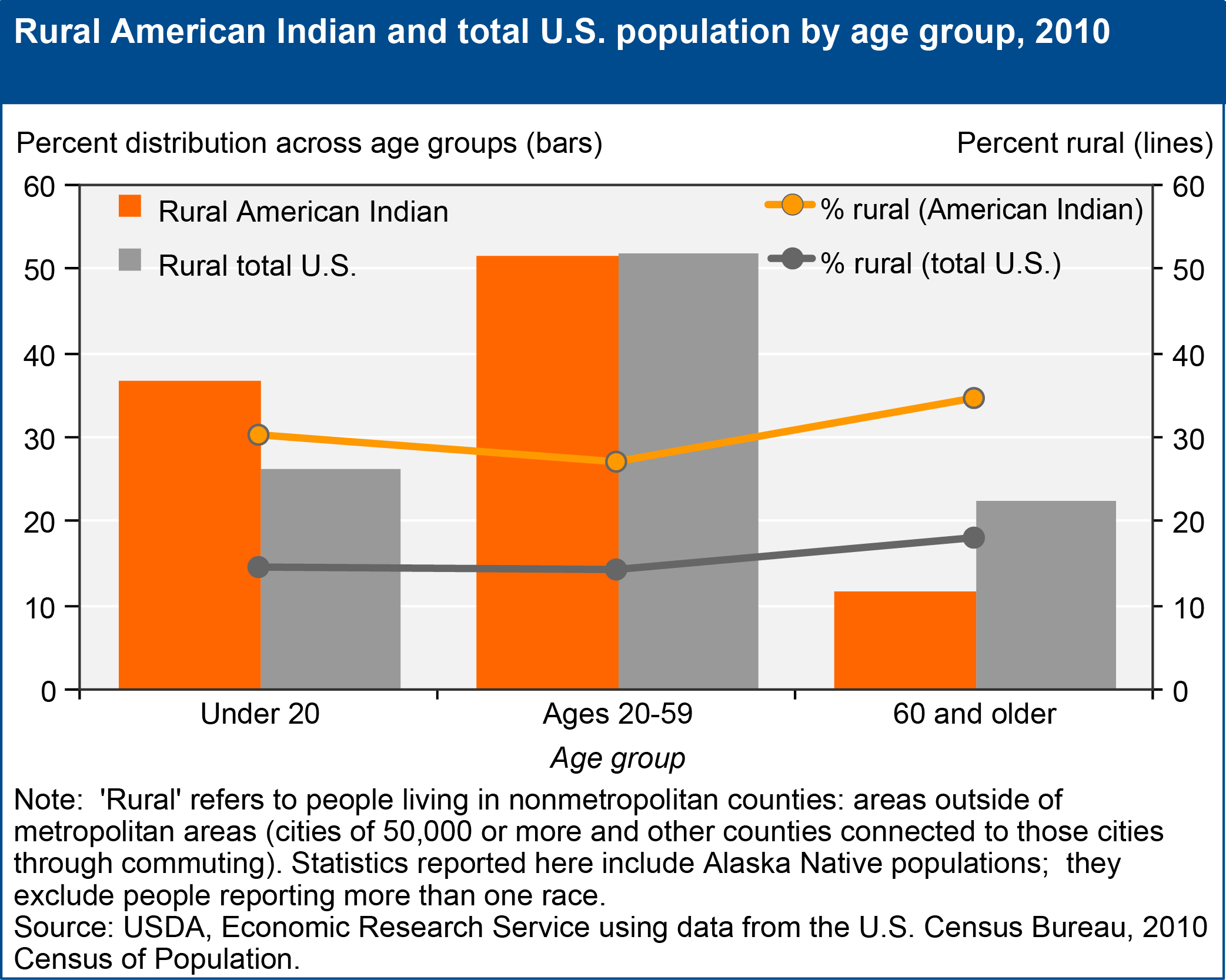American Indians remain disproportionally rural
- by John Cromartie and Timothy Parker
- 12/23/2014

Despite rapid increases in their urban population in recent decades, American Indians (including Alaska native populations but excluding those reporting more than one race) remain disproportionately rural compared with other groups. Based on self-identified race, 29 percent of all American Indians lived in rural areas in 2010, compared with about 15 percent of the total U.S. population. Persistent out-migration of rural residents finishing high school was as pronounced among American Indians as it was for the rural population as a whole, reflected in a slight dip in the percentage of working age adults residing in rural America. In addition, 52 percent of rural American Indians and the rural U.S. population in general were age 20-59, indicating an equal level of economic dependency on rural working-age adults, whether American Indian or not. But rural American Indians are much more likely to be young (under 20) than the total rural population (which has a higher share of population age 60 and older), putting very different pressures on family finances and public support programs. Find county-level data on the American Indian and Alaska Native population in ERS’s Atlas of Rural and Small-Town America.

